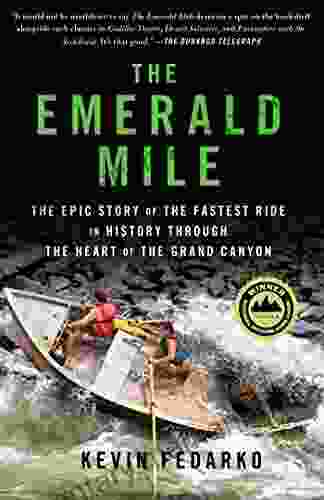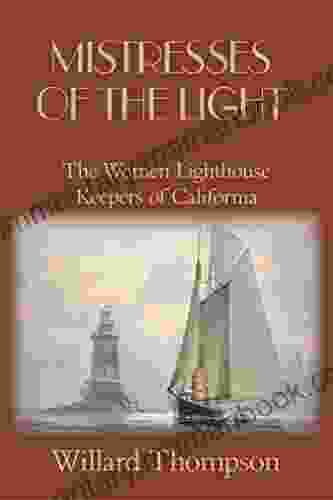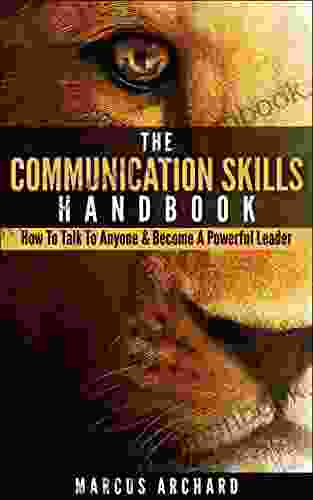The Abc Guide To The Universe

The universe is a vast and mysterious place, and we are only beginning to understand its secrets. The Abc Guide To The Universe is a comprehensive exploration of the cosmos, from the Big Bang to the present day. This guide provides an overview of the universe's history, structure, and contents, as well as the latest scientific discoveries and theories about the universe.
5 out of 5
| Language | : | English |
| File size | : | 19071 KB |
| Text-to-Speech | : | Enabled |
| Screen Reader | : | Supported |
| Enhanced typesetting | : | Enabled |
| Print length | : | 1 pages |
| Lending | : | Enabled |
| X-Ray for textbooks | : | Enabled |
The History of the Universe
The universe began with the Big Bang, about 13.8 billion years ago. The Big Bang was a cataclysmic explosion that created space, time, and matter. In the first few moments after the Big Bang, the universe was a hot, dense soup of subatomic particles. As the universe expanded and cooled, these particles began to combine to form atoms. The first atoms were hydrogen and helium, which are the two lightest elements in the universe.
Over time, the universe continued to expand and cool. Gravity caused the atoms to clump together to form stars and galaxies. The first stars were very massive and short-lived. They burned through their nuclear fuel quickly and exploded as supernovae. These supernovae enriched the universe with heavier elements, which are the building blocks of life.
About 4.6 billion years ago, the solar system formed from a cloud of gas and dust. The sun is a star that formed at the center of the solar system. The planets, including Earth, formed from the remaining gas and dust. Earth is a unique planet in the universe, because it is the only planet that we know of that can support life.
The Structure of the Universe
The universe is a vast and complex place. It is made up of galaxies, stars, planets, moons, and other objects. Galaxies are large collections of stars, gas, and dust. The Milky Way is the galaxy that our solar system is located in. It is a spiral galaxy with a diameter of about 100,000 light-years.
Stars are large, hot balls of gas that emit light and heat. The sun is a star. It is a medium-sized star that is about 4.6 billion years old. Stars are powered by nuclear fusion, which is the process of combining atoms to form heavier atoms.
Planets are smaller than stars and do not emit their own light. They orbit stars. Earth is a planet that orbits the sun. It is the third planet from the sun and is the only planet in the solar system that is known to support life.
Moons are smaller than planets and orbit planets. Earth has one moon, which is called the moon. The moon is a rocky body that does not have an atmosphere. It is about one-quarter the size of Earth.
The Contents of the Universe
The universe is made up of about 70% dark energy, 25% dark matter, and 5% ordinary matter. Dark energy is a mysterious force that is causing the expansion of the universe to accelerate. Dark matter is a type of matter that does not emit or reflect light. It is thought to make up about 25% of the universe, but we do not know what it is made of.
Ordinary matter is the type of matter that we are familiar with. It is made up of atoms, which are the basic building blocks of matter. Ordinary matter makes up about 5% of the universe.
The Scientific Discoveries and Theories About the Universe
Scientists are constantly making new discoveries about the universe. In the past few decades, we have learned a great deal about the universe's history, structure, and contents. Some of the most important scientific discoveries about the universe include:
- The discovery of the Big Bang
- The discovery of the expanding universe
- The discovery of dark energy
- The discovery of dark matter
- The discovery of the first exoplanets
Scientists are also constantly developing new theories about the universe. Some of the most important theories about the universe include:
- The Big Bang theory
- The theory of inflation
- The theory of dark energy
- The theory of dark matter
- The theory of multiverses
The Future of the Universe
The future of the universe is uncertain. Scientists believe that the universe will continue to expand and cool for billions of years. Eventually, the universe will reach a point where it is too cold for stars to form. This is known as the "Big Freeze." The universe will then be a dark and empty place.
However, there are also other theories about the future of the universe. Some scientists believe that the universe will eventually collapse in on itself in a "Big Crunch." Others believe that the universe will expand forever. The future of the universe is a mystery, and we may never know for sure what will happen.
The Abc Guide To The Universe is a comprehensive exploration of the cosmos, from the Big Bang to the present day. This guide provides an overview of the universe's history, structure, and contents, as well as the latest scientific discoveries and theories about the universe. The universe is a vast and mysterious place, and we are only beginning to understand its secrets. However, the Abc Guide To The Universe is a valuable resource for anyone who wants to learn more about the cosmos.
5 out of 5
| Language | : | English |
| File size | : | 19071 KB |
| Text-to-Speech | : | Enabled |
| Screen Reader | : | Supported |
| Enhanced typesetting | : | Enabled |
| Print length | : | 1 pages |
| Lending | : | Enabled |
| X-Ray for textbooks | : | Enabled |
Do you want to contribute by writing guest posts on this blog?
Please contact us and send us a resume of previous articles that you have written.
 Top Book
Top Book Novel
Novel Fiction
Fiction Nonfiction
Nonfiction Literature
Literature Paperback
Paperback Hardcover
Hardcover E-book
E-book Audiobook
Audiobook Bestseller
Bestseller Classic
Classic Mystery
Mystery Thriller
Thriller Romance
Romance Fantasy
Fantasy Science Fiction
Science Fiction Biography
Biography Memoir
Memoir Autobiography
Autobiography Poetry
Poetry Drama
Drama Historical Fiction
Historical Fiction Self-help
Self-help Young Adult
Young Adult Childrens Books
Childrens Books Graphic Novel
Graphic Novel Anthology
Anthology Series
Series Encyclopedia
Encyclopedia Reference
Reference Guidebook
Guidebook Textbook
Textbook Workbook
Workbook Journal
Journal Diary
Diary Manuscript
Manuscript Folio
Folio Pulp Fiction
Pulp Fiction Short Stories
Short Stories Fairy Tales
Fairy Tales Fables
Fables Mythology
Mythology Philosophy
Philosophy Religion
Religion Spirituality
Spirituality Essays
Essays Critique
Critique Commentary
Commentary Glossary
Glossary Bibliography
Bibliography Index
Index Table of Contents
Table of Contents Preface
Preface Introduction
Introduction Foreword
Foreword Afterword
Afterword Appendices
Appendices Annotations
Annotations Footnotes
Footnotes Epilogue
Epilogue Prologue
Prologue Hiag Akmakjian
Hiag Akmakjian S W Frank
S W Frank Nicola Cornick
Nicola Cornick M V Kasi
M V Kasi Charles D Ellis
Charles D Ellis Helen Mort
Helen Mort Emma Conway
Emma Conway Sam Kass
Sam Kass Tyriek Washington
Tyriek Washington B L Blanchard
B L Blanchard Abraham Philip
Abraham Philip Adam Bray
Adam Bray Jonathan Cahn
Jonathan Cahn Sara Sheridan
Sara Sheridan Adam Bertocci
Adam Bertocci Emily Kimelman
Emily Kimelman Charles Dagher
Charles Dagher Eve Hill
Eve Hill Diane Capri
Diane Capri Paulina Ulrich
Paulina Ulrich
Light bulbAdvertise smarter! Our strategic ad space ensures maximum exposure. Reserve your spot today!

 Gerald ParkerThe Pulitzer Prize-Winning World War I Novel: A Masterpiece of Literature and...
Gerald ParkerThe Pulitzer Prize-Winning World War I Novel: A Masterpiece of Literature and...
 Nathaniel PowellThe Epic Story of the Fastest Ride in History Through the Heart of the Grand...
Nathaniel PowellThe Epic Story of the Fastest Ride in History Through the Heart of the Grand...
 Barry BryantDive into the Enchanting World of One Piece Vol 92: Introducing Komurasaki,...
Barry BryantDive into the Enchanting World of One Piece Vol 92: Introducing Komurasaki,... Percy Bysshe ShelleyFollow ·12.2k
Percy Bysshe ShelleyFollow ·12.2k Paul ReedFollow ·12.1k
Paul ReedFollow ·12.1k Vince HayesFollow ·12.9k
Vince HayesFollow ·12.9k Winston HayesFollow ·14.1k
Winston HayesFollow ·14.1k Alan TurnerFollow ·2.8k
Alan TurnerFollow ·2.8k Jan MitchellFollow ·6.7k
Jan MitchellFollow ·6.7k Jeremy MitchellFollow ·9.9k
Jeremy MitchellFollow ·9.9k Leo MitchellFollow ·12.2k
Leo MitchellFollow ·12.2k

 Kelly Blair
Kelly BlairSheppard Lee Written By Himself: A Journey of...
In the realm of...

 George Bernard Shaw
George Bernard ShawViper Naga Brides: Unveiling the Enthralling Fantasy...
In the realm of...

 Neil Gaiman
Neil GaimanOnce Upon a Hill in Tuscany: A Medieval Short Story
In the heart of medieval...

 Preston Simmons
Preston SimmonsBody Bereft: Exploring Loss, Love, and Legacy in Antjie...
A Poetic Requiem for the Lost:...

 Percy Bysshe Shelley
Percy Bysshe ShelleyThe Amazing Story Of Robert Smalls Escape From Slavery To...
The life of Robert Smalls is a testament to...
5 out of 5
| Language | : | English |
| File size | : | 19071 KB |
| Text-to-Speech | : | Enabled |
| Screen Reader | : | Supported |
| Enhanced typesetting | : | Enabled |
| Print length | : | 1 pages |
| Lending | : | Enabled |
| X-Ray for textbooks | : | Enabled |








